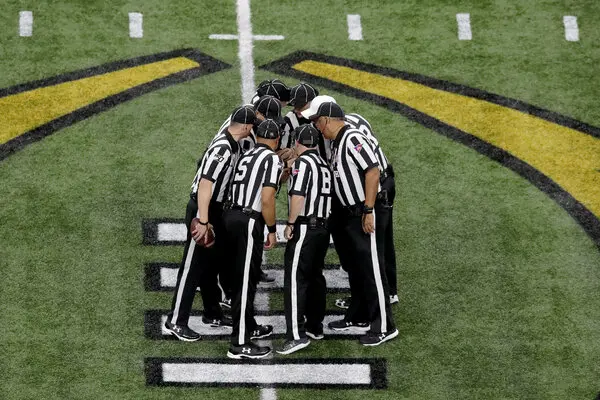How the 2025 Rules Changes in College Football Impact the Game and Watching Experience

Exploring the world of college football is quite the dandy task if you’re just looking to have some fun on Saturday. Your favorite school has a new batch of recruits, the older ones are getting their man strength, and each conference is looking to crown its champion, send its best schools to the big tournament, and prove which of (the SEC is the answer) will prove the best of all of them.
However, getting into the midst of these games requires a certain level of knowledge about more than just the players. It requires keeping up with whatever the NCAA decides to change, implement, or curb in its sanctioned games to ensure that its rulebook makes things fair and understandable for the sake of the game.
While rulebook adjustments and new considerations are always up for debate, the NCAA implements things that are in the spirit of safety and a better flow of the game. As we know, they also do it to make sure to close loopholes and curb any shenanigans that ruin the product on the field.
The effects of this situation can go a bunch of different ways, and some of the most important ones will affect the pacing, discipline, and even the betting market that we see on the college circuit. BetBrain has already determined changes (albeit small ones) in odds due to these rulebook tweaks, which should tell you that they may be small, but not insignificant.
When and Why The NCAA Intervened With These Rule Changes
NCAA’s Media Center announcement has directly talked about these changes, releasing them in the middle of April and leaving teams to get ready for the new season while studying these changes.
In fact, the amendment to the rulebook got its own official release through a six-page document on these rule changes, which showcased that the modifications have been in effect since April 16, 2025. As such, there are very clear terms on how these new rules will apply and whether there are exceptions that will come into effect under specific circumstances.
The same document clearly states that these changes override previous ones, preventing misinterpretations from converging. The NCAA is clear in its language, as we will explain below.
Injury Timeouts Against the Faking of Injuries
The very first thing that you’ll find in the official documentation is all about fairness and pacing. Simply put, players need to stop feigning injuries if they don’t want their team to lose a timeout or get slapped with a 5-yard delay of game penalty.
In the past, the situation was that appearing injured would trigger an automatic general timeout, giving the team that really needed to draw up a play some valuable time to get its stuff together. However, the NCAA realized that there was a lot of strategic foul play, which means that they finally decided to impose a cost.
In short, once the officials spot the ball, any injury that a player presents will lead to an automatic team timeout. If they don’t have one, the delay of the game penalty comes into play. As such, there will be fewer pacing issues caused by strategic feigning of injuries, which can certainly affect the watching experience, but also the real-time change in how odds move due to apparent injuries.
Instant Replay Language Changes
This matter is quite simple because it’s about the used terms rather than substantial changes. However, as a viewer, you ought to know that they’re saying when they’re announcing a call.
Beforehand, they would say that, after review, a play would stand. Nowadays, the accepted format in which an official can announce the call would be to say that a ruling on the field is upheld.’ The usage of ‘confirmed’ has the same fate as the ‘stand’ word.
Pre-Snap Movements and Signals
Per the language in the new set of rules, you have elements that qualify as ‘defensive movement’ and ‘disconcerting signals.’ We’re talking about the much-maligned pre-snap shenanigans, trying to make the offense flinch with some kind of weird movements or shouts.
The first-mentioned element is the simulated action for the defense before the snap in an attempt to prompt the offense to move before the snap and get a false start penalty. This is common sense at this point. The ‘clap’ term is also an offense-only term that the defense can get a penalty if they use.
Moreover, you have the shouting of stuff that you would see in cadences of the defense that the offense can’t use. There are two terms that would apply: ‘move’ and ‘stem.’
Every single violation of these rules would incur a dead-ball, delay of game foul, which comes with the customary 5-yard penalty.
Technology Usage Clarifications
Now that modern tech is a staple of the communication and showcasing aspect of in-game or half-time dynamics, the NCAA has made a couple of amendments about this particular detail. It creates a couple of changes:
● Coach-to-player communication—this new movement happens for both the FBS and FCS, which brings the change to the lower side of the D1 circuit. As we know, helmet-based comms have been in the FBS since last year (2024). Starting this year, the amendment says that the FCS can use it as well.
● Tablets—this is yet another 2024 detail that has found itself with a new amendment for 2025. Yes, they are okay to use in the coaching boots, sideline, and locker room. Very importantly, the change is that the team’s staff will be able to interconnect the tablet with other devices for larger projected images, but only during halftime intermissions. There can be no data, playsheets, or any other detail other than images on these interconnected tablets.
Per the new set of rules, the scrimmage kick formation has a few details added to it.
The only player that can be part of this formation is the potential kicker ‘aligned within the frame of the snapper.’ However, there cannot be any player within the clear path (the snapping trajectory) between the spanner and the potential kicker.
These are some of the most important changes, but not all of them. The NCAA has made small tweaks, which can be quite important. If you’re basing your reading of the game with the purpose of betting, remember to play responsibly!

NFL Draft Diamonds was created to assist the underdogs playing the sport. We call them diamonds in the rough. My name is Damond Talbot, I have worked extremely hard to help hundreds of small school players over the past several years, and will continue my mission. We have several contributors on this site, and if they contribute their name and contact will be in the piece above. You can email me at nfldraftdiamonds@gmail.com
